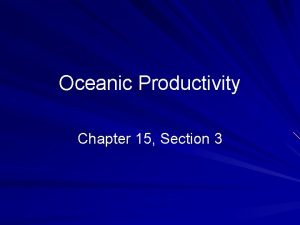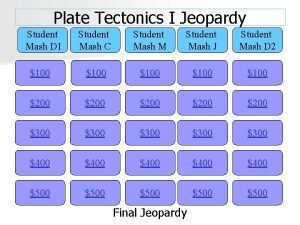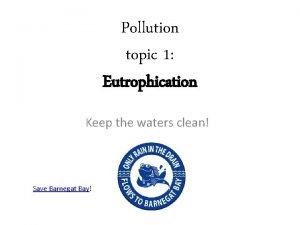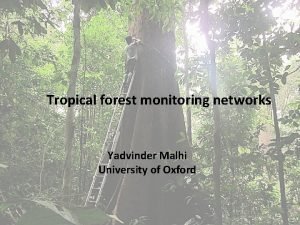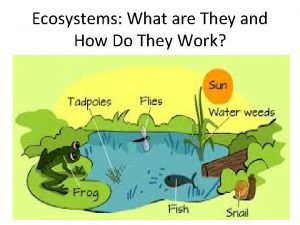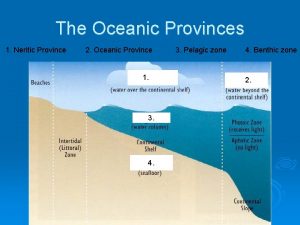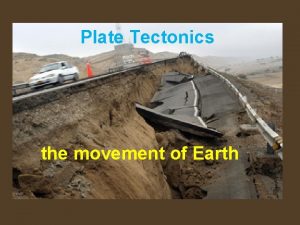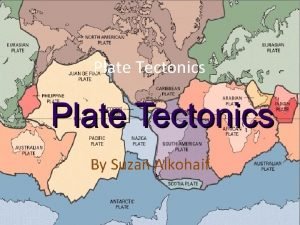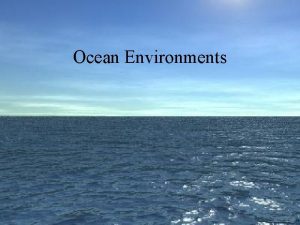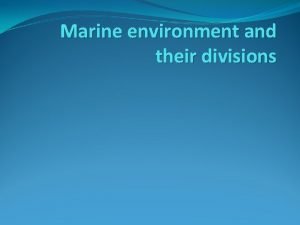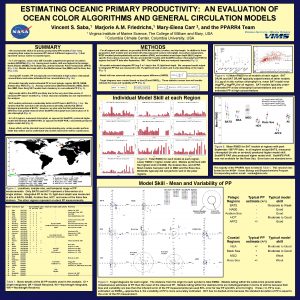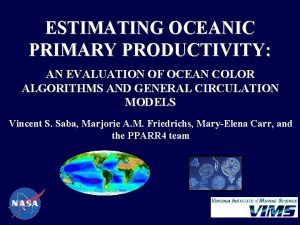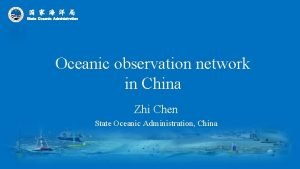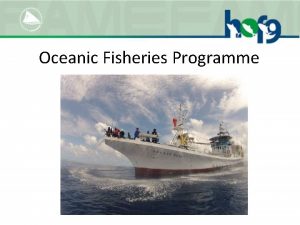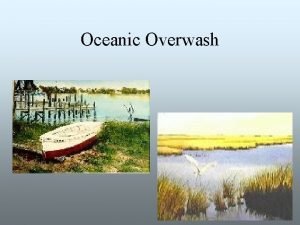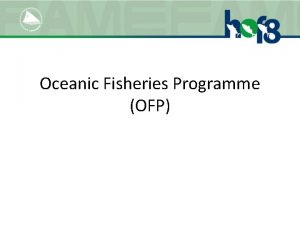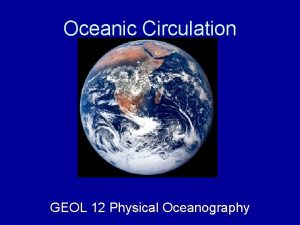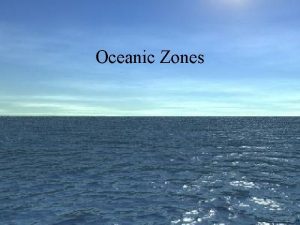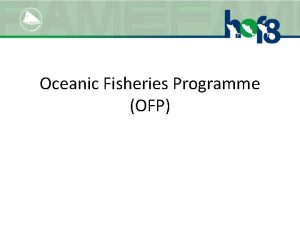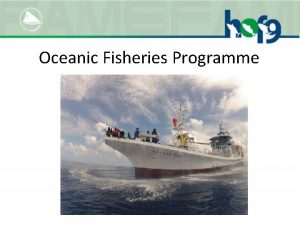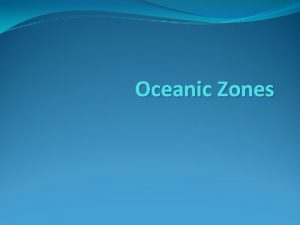Oceanic Productivity Chapter 15 Section 3 Primary Productivity













- Slides: 13

Oceanic Productivity Chapter 15, Section 3

Primary Productivity – the production of organic compounds from inorganic substances through photosynthesis or chemosynthesis Photosynthesis – the use of light energy to convert water and carbon dioxide into energyrich glucose molecules Chemosynthesis – the process by which certain microorganisms create organic molecules from inorganic nutrients using chemical energy Two factors influence a region’s photosynthetic productivity: the availability of nutrients and the amount of solar radiation, or sunlight

Productivity in Polar Oceans Polar regions experience continuous darkness for about three months of winter and continuous illumination for about three months of during summer Productivity of phytoplankton, mostly singlecelled algae, peaks in May As soon as the phytoplankton develop, zooplankton come in to eat them In summer, melting ice creates a low-salinity, low -density region on the surface that will not readily mix with the deeper waters; helping the phytoplankton to continue producing The availability of solar energy is what limits photosynthetic productivity in polar areas

Productivity in Polar Oceans

Productivity in Tropical Oceans Productivity is low in tropical regions of the open ocean Light penetrates much deeper into tropical oceans than in temperate and polar waters Solar energy is available year-round A permanent thermocline prevents mixing between surface waters and nutrient-rich deeper waters; it is a barrier that cuts off the supply of nutrients from deeper waters Productivity in tropical regions is limited by the lack of nutrients

Water Layers in the Tropics

Productivity in Temperate Oceans In temperate regions, which are found at mid-latitudes, a combination of these two limiting factors, sunlight and nutrient supply, controls productivity Winter: productivity is low, due to the low angle of the sun and shallower sunlight penetration Spring: phytoplankton bloom due to an increase in nutrients and sunlight, nutrient supply is in greater demand limits production Summer: nutrients depleted from spring “bloom” are not able to be replenished from deep waters due to a sharp thermocline, phytoplankton population will remain low Fall: nutrients return to the surface, as the summer thermocline breaks down, and another “bloom” of phytoplankton occurs (short-lived due to decreasing sunlight)

Productivity in Temperate Oceans

Comparing Productivities

Oceanic Feeding Relationships As producers make food available to the consuming animals of the ocean, energy passes from one feeding population to the next Trophic Level – a nourishment level in a food chain; plant and algae → herbivores → carnivores The transfer of energy between trophic levels is very inefficient Food Chain – sequence of organisms through which energy is transferred, starting with the primary producer Food Web – a group of interrelated food chains Animals that feed through a food web rather than a food chain are more likely to survive because they have alternative foods to eat should one of their food sources diminish or disappear

Ecosystem Energy Flow

Food Chain Vs. Food Web

Assignment Read Chapter 15, Section 3 (pg. 433 -437) Do Section 15. 3 Assessment #1 -6 (pg. 437)
 Ocean to ocean convergent boundary
Ocean to ocean convergent boundary Continental continental convergent boundary
Continental continental convergent boundary Section 15.3 oceanic productivity answer key
Section 15.3 oceanic productivity answer key The cross section below depicts magnetized oceanic crust
The cross section below depicts magnetized oceanic crust Process of primary productivity
Process of primary productivity Gross primary productivity
Gross primary productivity Zone of tolerance
Zone of tolerance Oceanic provinces and zones
Oceanic provinces and zones Mountain plates
Mountain plates Convergent boundary
Convergent boundary Divergent boundary real life example
Divergent boundary real life example Benthic zone divisions
Benthic zone divisions Oceanic divisions
Oceanic divisions New york oceanic
New york oceanic


